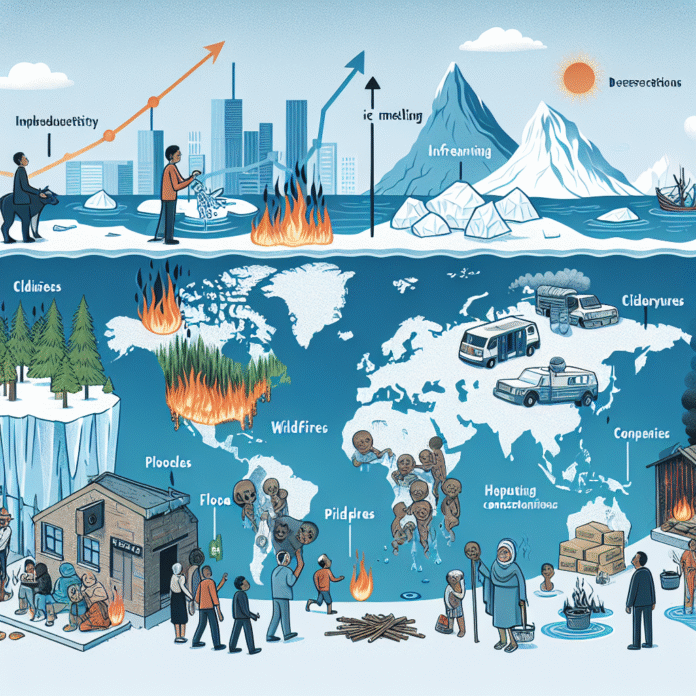The Impact of Climate Change on Inequality
How Climate Change Amplifies Inequality
Climate change is not just an environmental issue; it is also a significant social and economic crisis that exacerbates existing inequalities. Communities that are already marginalized face the brunt of climate-related impacts, further widening the gap between them and more affluent populations. This phenomenon is evident in various aspects, including health, wealth, and access to resources.
Disproportionate Health Impacts
Low-income communities and communities of color are often located in areas more vulnerable to climate change, such as flood-prone regions or areas with high pollution levels. These populations frequently lack access to quality healthcare, making them more susceptible to the health effects of climate change, such as respiratory issues from extreme heat and worsening air quality. Additionally, the stress and trauma linked to climate disasters can lead to long-term mental health challenges, compounding the health disparities that already exist.
Economic Disparities
Economic inequality is another critical dimension of how climate change exacerbates social disparities. Wealthier individuals and communities are typically better equipped to withstand climate-related shocks, such as natural disasters or fluctuations in resource availability. They have the financial means to repair homes, relocate, or invest in climate-resilient infrastructure. In contrast, low-income families may struggle to recover from such events, leading to a cycle of poverty that is difficult to escape.
Moreover, as climate change impacts agriculture and food security, low-income communities often bear the brunt of rising food prices and reduced access to nutritious options. This can lead to increased food insecurity and malnutrition, further entrenching health inequalities.
Access to Resources and Opportunities
Access to clean water, reliable energy, and safe housing is critical for a community’s resilience to climate change. However, marginalized communities frequently face barriers in accessing these essential resources. For instance, many low-income neighborhoods lack adequate infrastructure, making them more vulnerable to flooding and other climate impacts. Furthermore, access to green spaces and recreational areas is often limited in these communities, affecting both physical and mental well-being.
Education and job opportunities related to climate adaptation and mitigation are also disproportionately available to those in wealthier areas. As the demand for green jobs grows, individuals in disadvantaged communities may not have the training or resources to compete for these opportunities, further perpetuating cycles of inequality.
Policy Implications and Solutions
Addressing the intersection of climate change and inequality requires comprehensive policy interventions. Policymakers must prioritize equity in climate action by ensuring that marginalized communities have a voice in decision-making processes. This includes investing in community-led climate resilience projects that address specific local needs.
Additionally, implementing policies that promote affordable housing, access to healthcare, and job training programs can help alleviate some of the inequalities exacerbated by climate change. Transitioning to a green economy should also focus on creating equitable job opportunities that uplift disadvantaged communities rather than leave them behind.
In conclusion, climate change is a multifaceted challenge that amplifies existing inequalities. Recognizing and addressing these disparities is crucial for creating a more just and sustainable future. By prioritizing equity in climate action, we can work towards a resilient society that protects the most vulnerable among us.


